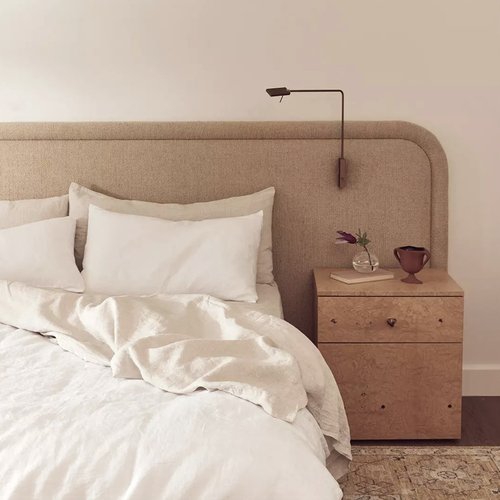A Paint
WHAT'S IN IT: Paint can be a potential health hazard in the bedroom due to the release of VOCs into the indoor air. VOCs are chemicals that evaporate at room temperature and can linger in the air for an extended period after painting. Additionally, some paints may contain other harmful substances like heavy metals or biocides, which can further contribute to indoor air pollution and potential health risks. Lastly, antimicrobials are often present to increase resistance to mold and bacteria.
HEALTH IMPLICATIONS: Long-term exposure to certain VOCs has been linked to health problems. VOCs can trigger or worsen asthma symptoms, leading to increased frequency and severity of asthma attacks. Some VOCs, such as benzene and toluene, have been linked to neurological symptoms including cognitive impairment, confusion and drowsiness. There is also a cancer risk associated with some VOCs, such as benzene, as well as the risk of adverse reproductive outcomes for pregnant women, including miscarriage and developmental abnormalities in the fetus. Heavy metals can lead to headaches, dizziness, irritability and mental confusion. Antimicrobials can lead to endocrine and microbiome disruption, as well as allergic reactions.
HEALTHY ALTERNATIVES: Choosing low-VOC or zero-VOC paints, such as mineral paints, and ensuring adequate ventilation during and after painting can help minimize these hazards and create a healthier bedroom. Avoid any paints labeled as antifungal or antimicrobial as these will often contain additional pesticides. Seek out paints certified by Green Seal-11, which ensures that the paint limits VOCs and harmful biocides, along with mercury, lead and various carcinogens.






